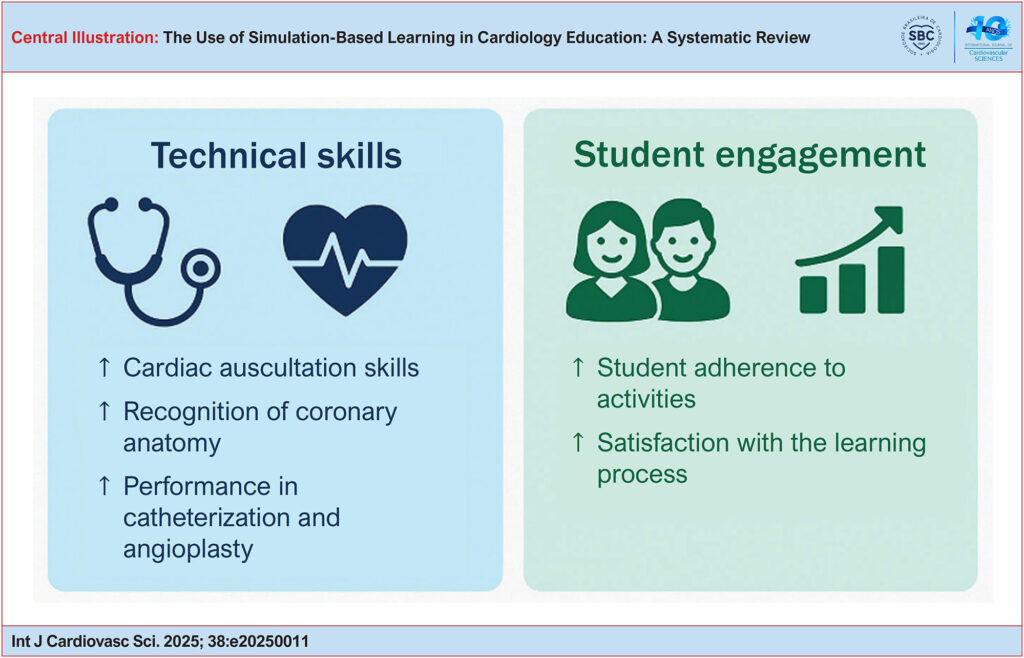International Journal of Cardiovascular Sciences. 23/Oct/2025;38:e20250011.
The Use of Simulation-Based Learning in Cardiology Education: A Systematic Review
Abstract
The use of simulation in medical education is now a well-established practice. Many articles currently explore various simulation methods and the impacts reported by students. In cardiology, this is no exception; however, reviews on the topic do not focus on a specific area.
The objective of this study was to evaluate the existing evidence on the use of simulation in medical education, with a specific focus on cardiology.
This systematic review followed the Preferred Reporting Items for Systematic Reviews and Meta-Analyses (PRISMA) guidelines and searched the Ovid MEDLINE, Literatura Latino-Americana e do Caribe em Ciências da Saúde (LILACS), CINAHL, and CENTRAL databases. Clinical trials reporting the use of realistic simulation for teaching cardiology were included. Two independent reviewers assessed the studies for eligibility. The simulation methods and topics, along with their evaluations, were analyzed.
A total of 435 articles were initially identified based on the search criteria. Seven articles were selected for detailed analysis. Three of these studies reported an improvement in cardiac auscultation skills through simulation. One study showed improved ability to recognize coronary anatomy; another demonstrated enhanced performance during catheterization, and one highlighted better outcomes during angioplasty. Only one study showed a slight improvement in the diagnosis of acute myocardial infarction. In addition to these clinical improvements, there was also a noted increase in student engagement and satisfaction.
Realistic simulation, when integrated as a complement to existing curricula, enhances the performance of cardiology students.
Keywords: Simulation Training; Medicine; Cardiology; Medical Education
75

